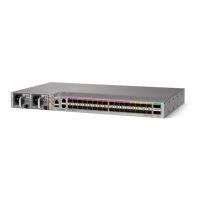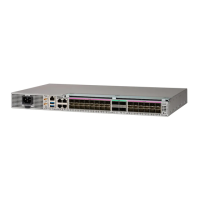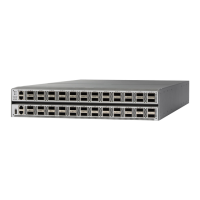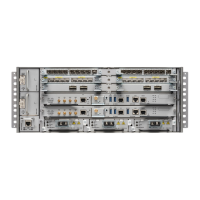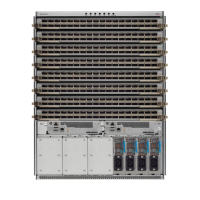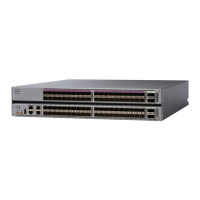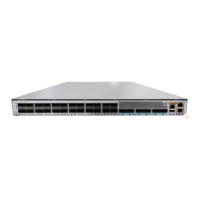forwarded outside a VPN and also prevent packets that are outside a VPN from being forwarded to a router
within the VPN.
VPN Routing Information: Distribution
The distribution of VPN routing information is controlled through the use of VPN route target communities,
implemented by BGP extended communities. VPN routing information is distributed as follows:
• When a VPN route that is learned from a CE router is injected into a BGP, a list of VPN route target
extended community attributes is associated with it. Typically, the list of route target community extended
values is set from an export list of route targets associated with the VRF from which the route was learned.
• An import list of route target extended communities is associated with each VRF. The import list defines
route target extended community attributes that a route must have for the route to be imported into the
VRF. For example, if the import list for a particular VRF includes route target extended communities
A, B, and C, then any VPN route that carries any of those route target extended communities—A, B, or
C—is imported into the VRF.
BGP Distribution of VPN Routing Information
A PE router can learn an IP prefix from the following sources:
• A CE router by static configuration
• An eBGP session with the CE router
• Open Shortest Path First (OSPF), Enhanced Interior Gateway Routing Protocol (EIGRP), and RIP as
Interior Gateway Protocols (IGPs)
The IP prefix is a member of the IPv4 address family. After the PE router learns the IP prefix, the PE converts
it into the VPN-IPv4 prefix by combining it with a 64-bit route distinguisher. The generated prefix is a member
of the VPN-IPv4 address family. It uniquely identifies the customer address, even if the customer site is using
globally nonunique (unregistered private) IP addresses. The route distinguisher used to generate the VPN-IPv4
prefix is specified by the rd command associated with the VRF on the PE router.
BGP distributes reachability information for VPN-IPv4 prefixes for each VPN. BGP communication takes
place at two levels:
• Internal BGP (iBGP)—within the IP domain, known as an autonomous system.
• External BGP (eBGP)—between autonomous systems.
BGP propagates reachability information for VPN-IPv4 prefixes among PE routers by the BGP protocol
extensions (see RFC 2283, Multiprotocol Extensions for BGP-4), which define support for address families
other than IPv4. Using the extensions ensures that the routes for a given VPN are learned only by other
members of that VPN, enabling members of the VPN to communicate with each other.
MPLS Forwarding
Based on routing information stored in the VRF IP routing table and the VRF FIB table, packets are forwarded
to their destination using MPLS.
A PE router binds a label to each customer prefix learned from a CE router and includes the label in the
network reachability information for the prefix that it advertises to other PE routers. When a PE router forwards
a packet received from a CE router across the provider network, it labels the packet with the label learned
L3VPN Configuration Guide for Cisco NCS 540 Series Routers, IOS XR Release 6.3.x
53
MPLS L3VPN Overview
VPN Routing Information: Distribution
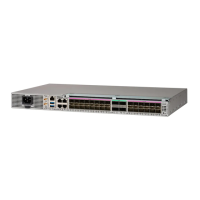
